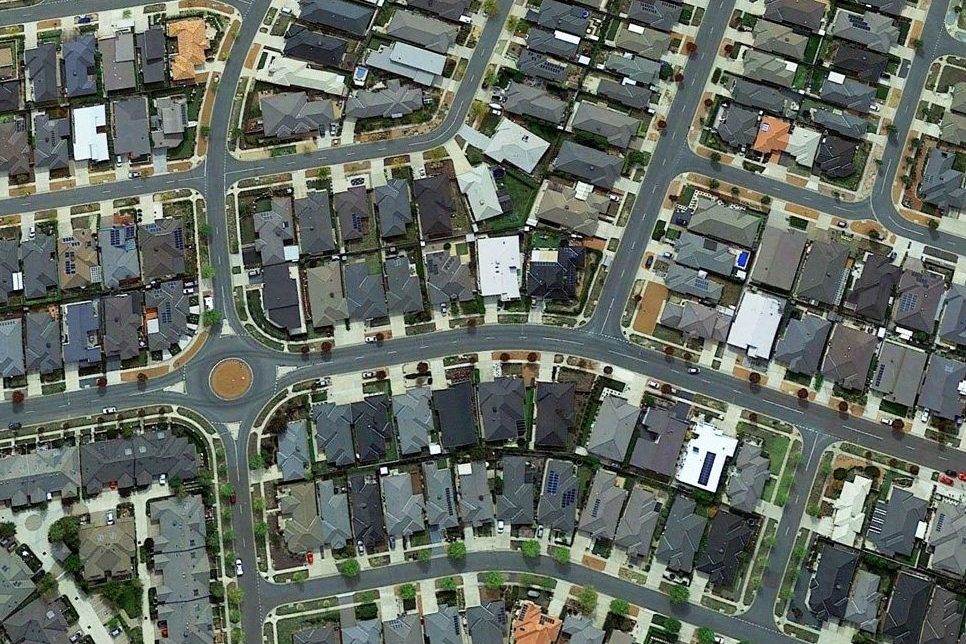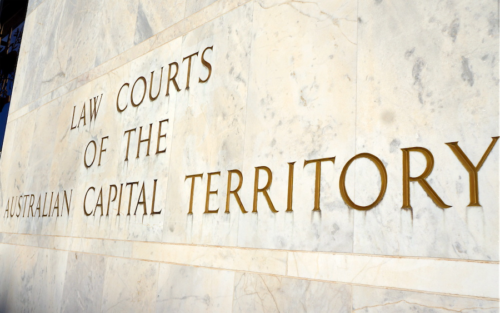
“The government’s ‘Hail Mary’ approach to redevelopment, relying on privately initiated, largely single-block redevelopment, has produced too many poor-quality redevelopments,” writes MIKE QUIRK.
THE rationale behind Canberra’s compact and polycentric city strategy is sound.

It calls for widening of housing choice, infrastructure cost savings, reduced travel, lower environmental and ecological impact and reduced travel.
However, the implementation of the strategy based on privately initiated redevelopment and accommodating growth within the existing urban footprint is deficient.
The District Population Projections 2022-2060, prepared in the context of the strategy, projects a 326,000 increase in the ACT population. Most growth is projected to occur in north Canberra (78,954), Molonglo (74,046), Belconnen (69,850); Gungahlin (58,416), south Canberra (26,223) and Woden (17,405). No growth is projected in Tuggeranong and minimal growth in Weston Creek (1356).
This approach assumes the identified growth areas can accommodate, like a magic pudding, ever increasing levels of housing.
To evaluate the desirability and feasibility of the approach, alternative scenarios of population and employment should be prepared. Considerations include:
Housing choice and affordability
A long-standing majority preference has been for a detached dwelling with households trading-off longer journeys to work to achieve the dream of a new house in a family-friendly suburb. Such preferences are changing with increasing numbers of single and couple households, increasing concentration of employment and services in inner areas and choice constrained by lower housing affordability.
The recently released District Strategies identified a substantially lower population with a 2050 housing supply of 14,500 to 25,500 dwellings in the inner north, 5500 to 6500 dwellings in Gungahlin and 20,000-24,000 dwellings in Molonglo.
Unless policies are adopted to increase the dispersal of employment and to improve transport connections to Tuggeranong and the western and northern areas of Belconnen and Gungahlin, inner areas prices will continue to increase and result in inner areas being affordable primarily to high-income households.
Increased employment dispersal would also increase the demand for dwellings in middle and outer suburbs, lower car use, increase walking and cycling and support public transport. Canberra’s multi-centred urban structure maximises the benefits of dispersal by enabling the concentration of higher-density housing at centres, well-connected by frequent transport services.
Infrastructure
The areas identified for high growth will require substantial upgrading or replacement of infrastructure as any spare capacity will well and truly have been utilised well before the estimated populations are reached.
If the aim is to contain growth to the existing urban footprint, ways to increase the demand for dwellings in Tuggeranong and Weston Creek should be explored. The infrastructure and travel costs of potential greenfield areas need to be documented, to enable comparison with infrastructure upgrades in existing areas.
Environment
Protecting biodiversity is a key argument for containing the development of Canberra within the existing urban footprint.
The ecological value of potential greenfield areas needs to be documented to establish the scope for development. The environmental impacts of a denser city – reduced travel, the loss of vegetation, the development of heat islands, increased stormwater run-off from the increase in hard surfaces and increased car-dependent detached housing development in the region – need to be evaluated. The relative water and energy consumption of higher-density dwellings and detached housing should also be evaluated.
Transport
As well as increasing housing in areas of high accessibility, other strategies to reduce car use including investment in cycleways, bus priority measures, increasing the coverage and frequency of an increasingly electrified bus network, should be assessed. To ensure the best use of limited funds, an evaluation is needed on whether light rail and bus rapid transport (BRT) is the better technology to use on the inter-town public transport network (the analysis of Stage 1 of light rail indicated BRT would be substantially cheaper while providing a similar level of benefit).
Implementation
The government’s “Hail Mary” approach to redevelopment, relying on privately initiated, largely single-block redevelopment, has produced too many poor-quality redevelopments and insufficient “missing middle” medium-density dwellings.
Block amalgamation guidelines are needed to improve outcomes and deliver community and environmental benefits. Consideration should be given to the government purchase of blocks particularly adjacent to existing government dwellings to facilitate the provision of social housing and for the government to act as a land developer to demonstrate best practice infill housing (as happened in the 1970s in Swinger Hill). The co-operation and support of the Commonwealth is needed to maximise the benefits of employment dispersal.
Such analysis would define the most appropriate distribution of population and employment and place Canberra’s development on firm foundations rather than the current superficial, rhetorical swamp.
Mike Quirk is a former NCA and ACT government planner.
Who can be trusted?
In a world of spin and confusion, there’s never been a more important time to support independent journalism in Canberra.
If you trust our work online and want to enforce the power of independent voices, I invite you to make a small contribution.
Every dollar of support is invested back into our journalism to help keep citynews.com.au strong and free.
Thank you,
Ian Meikle, editor





Leave a Reply